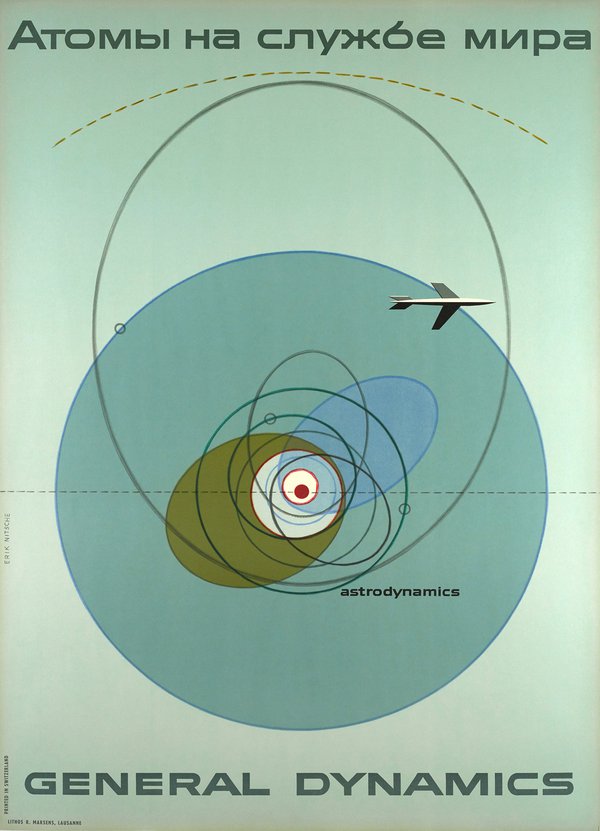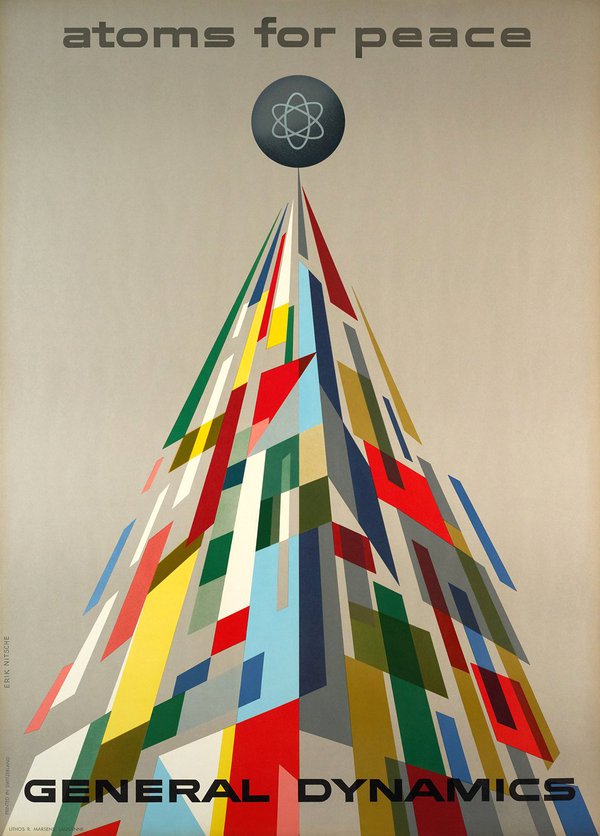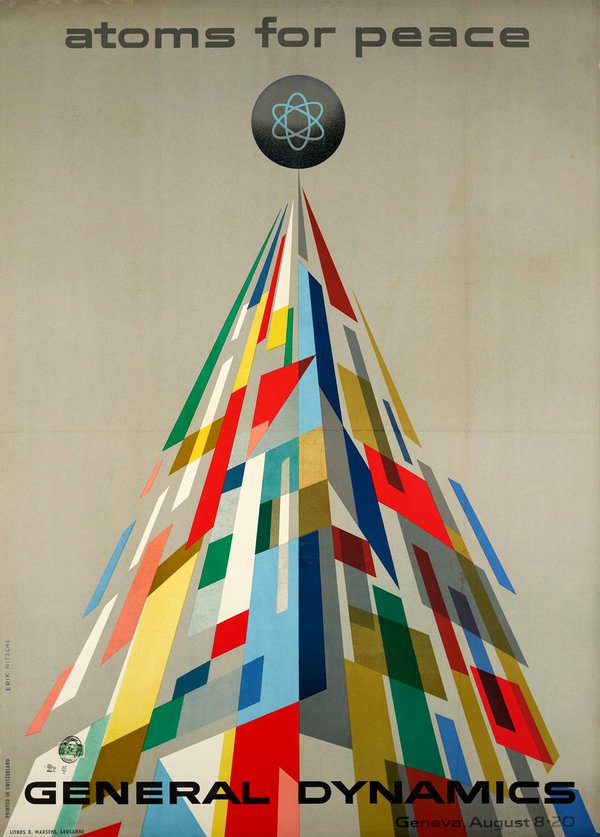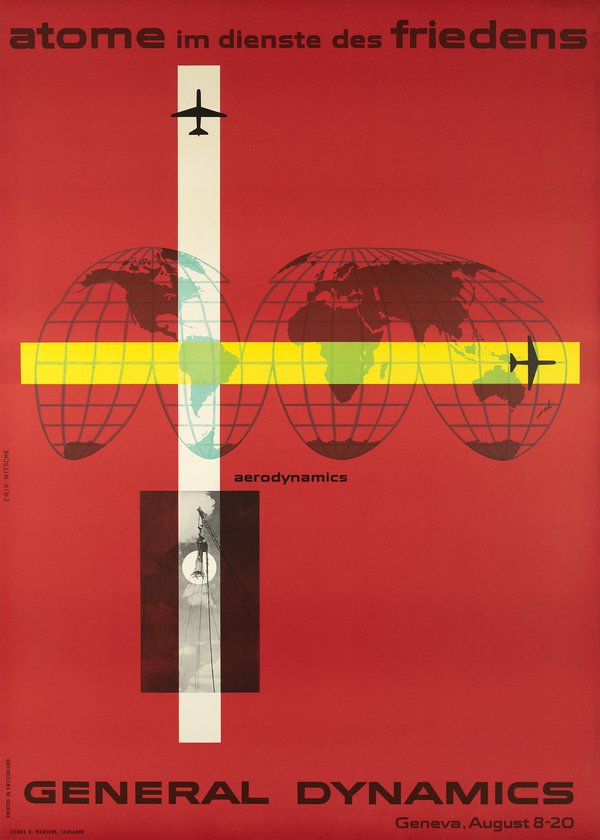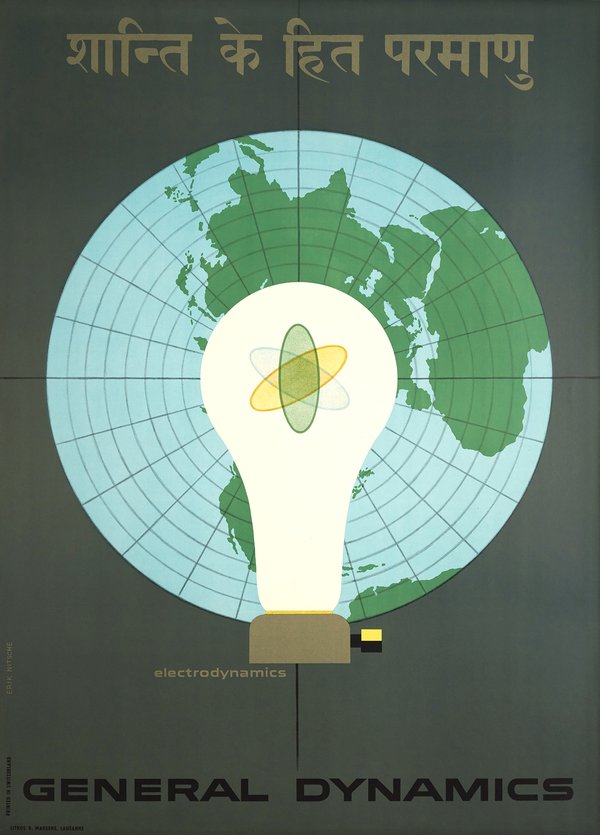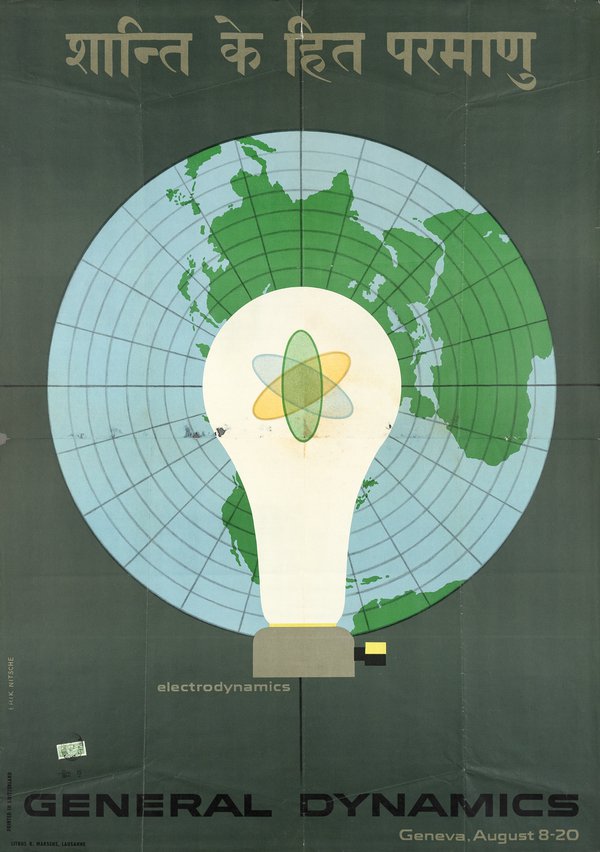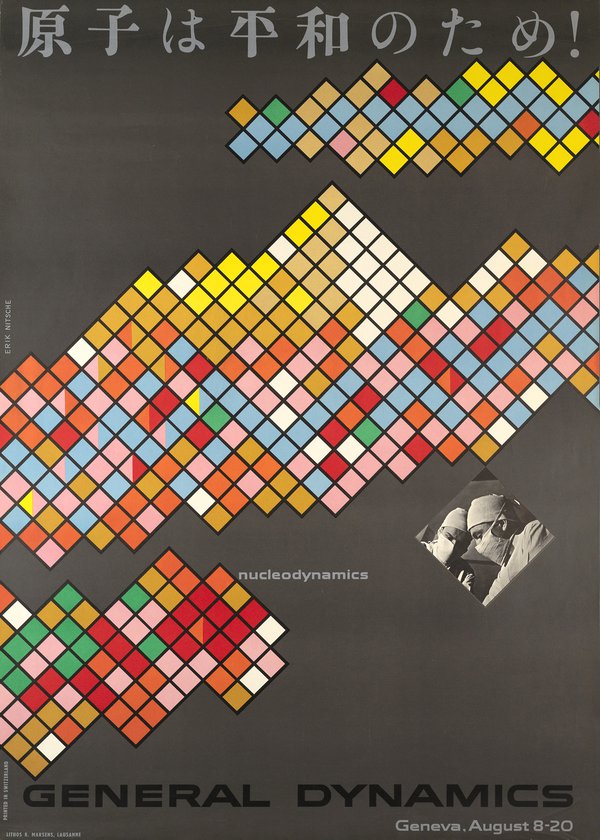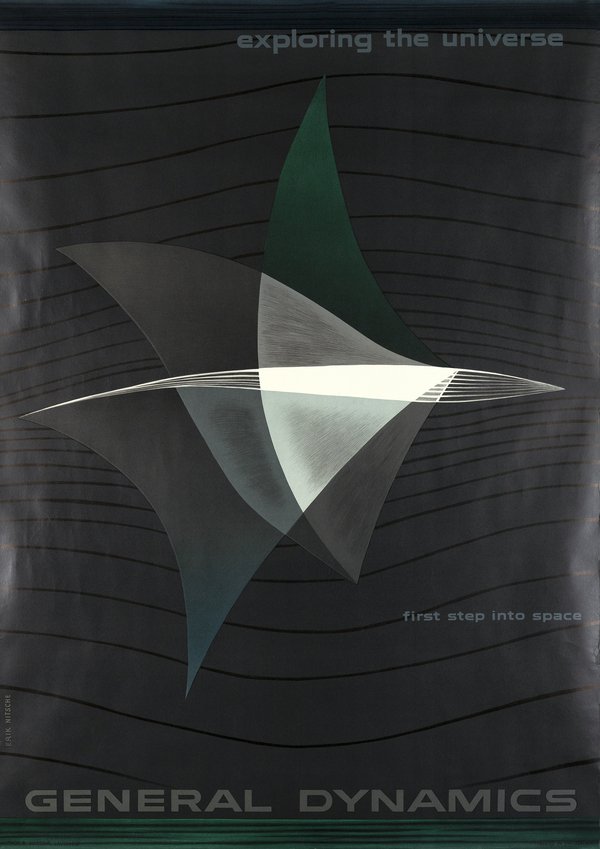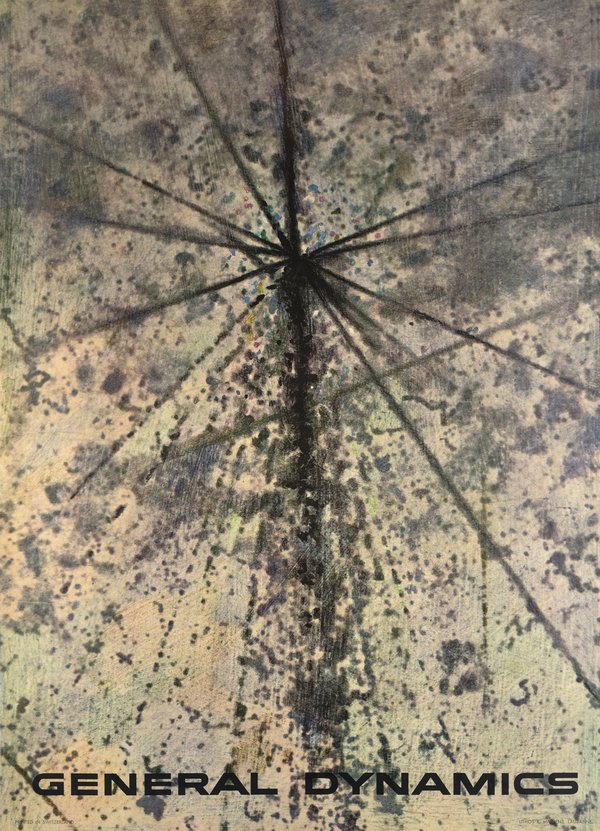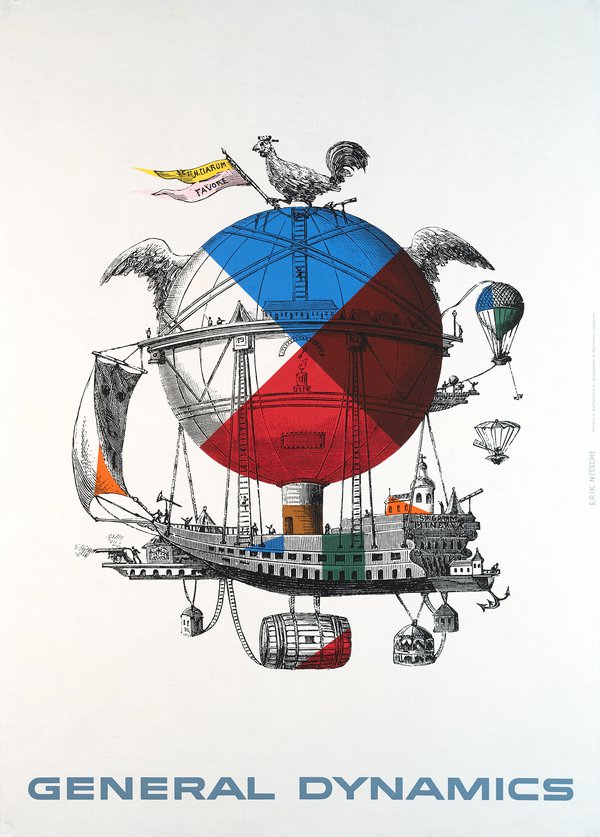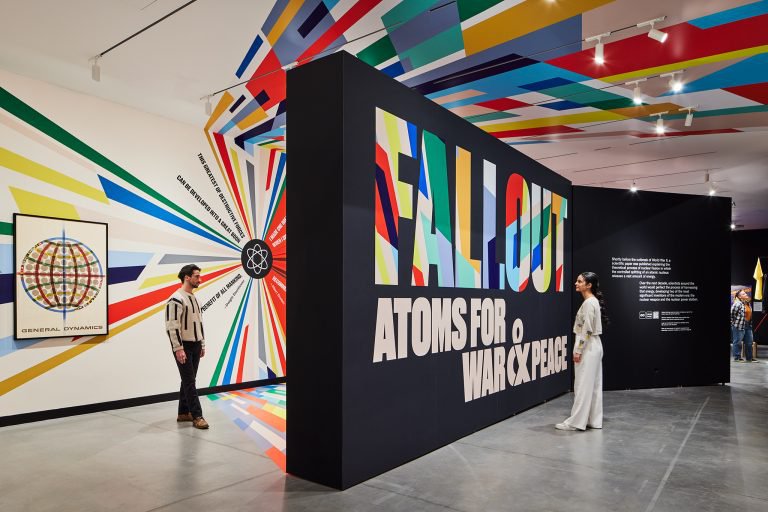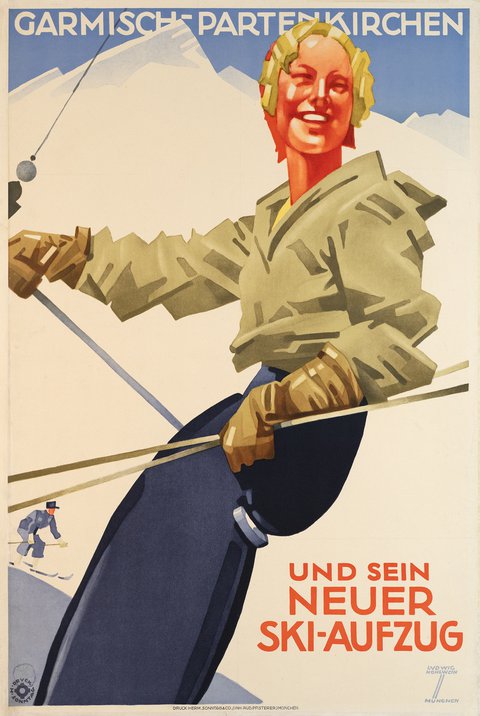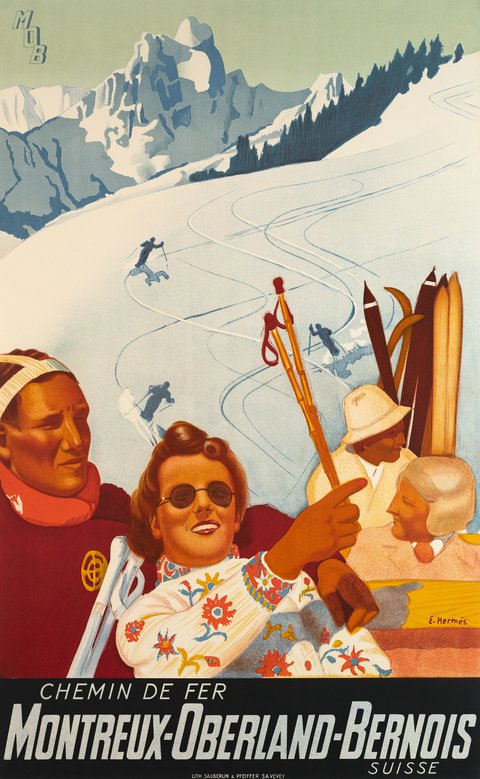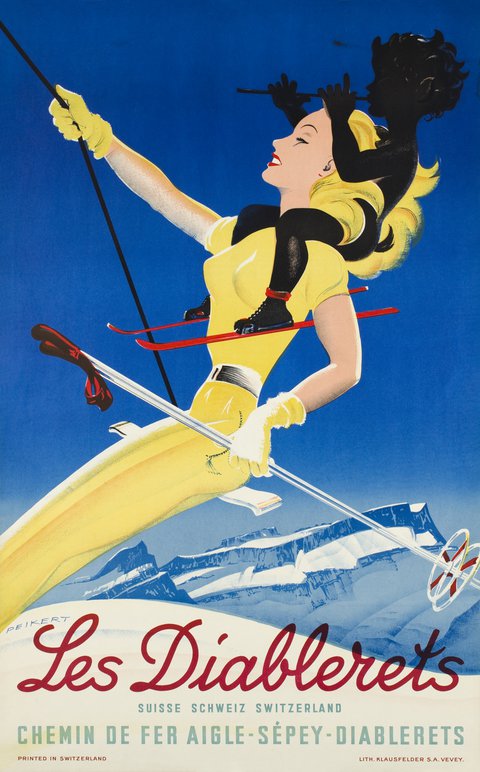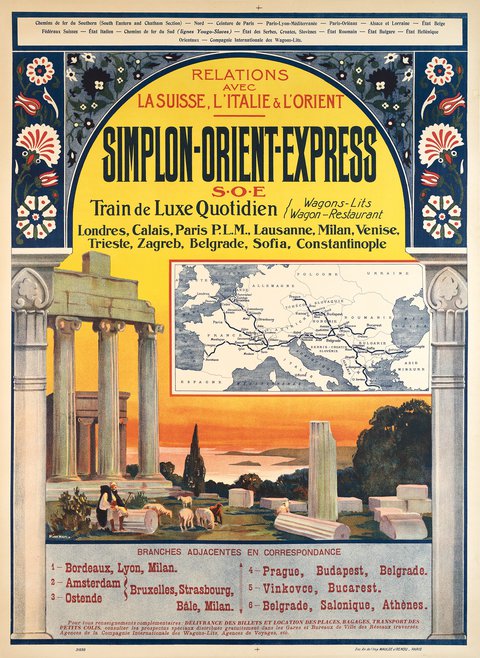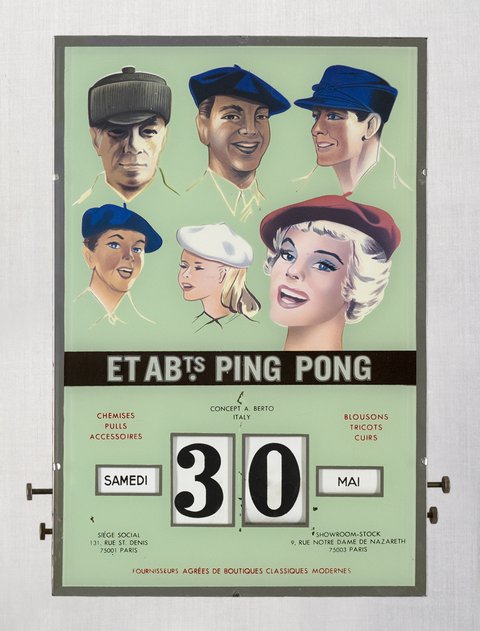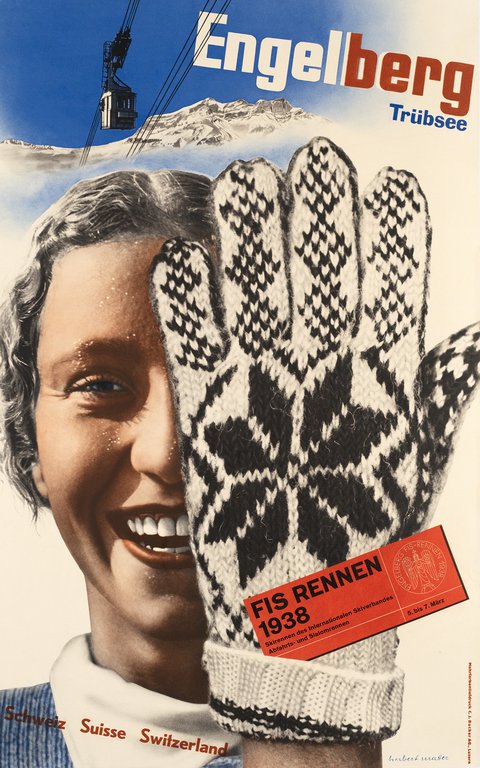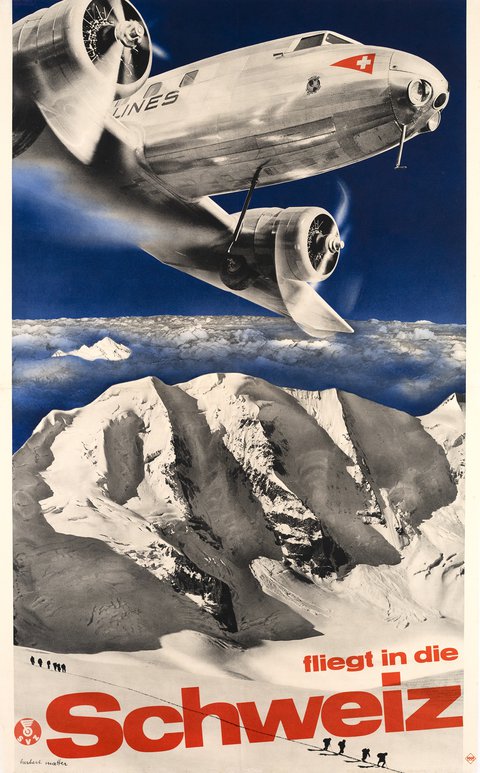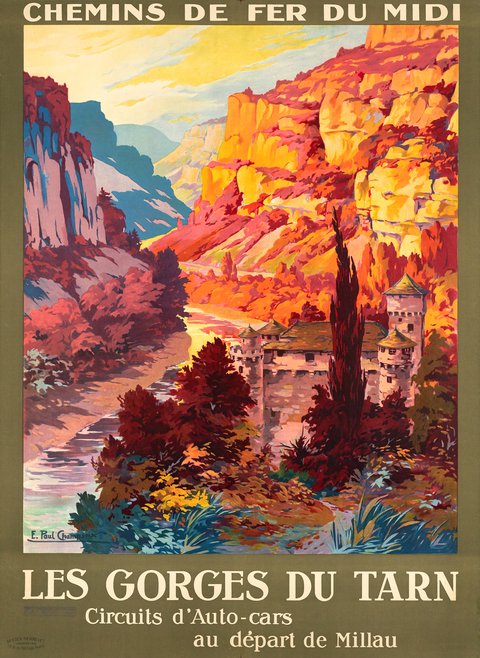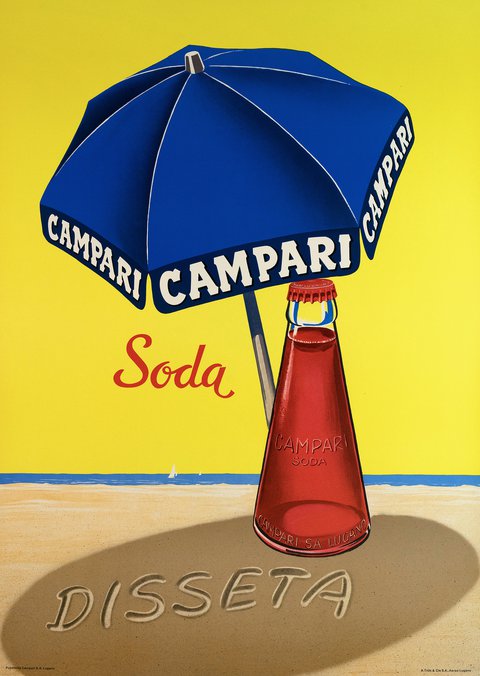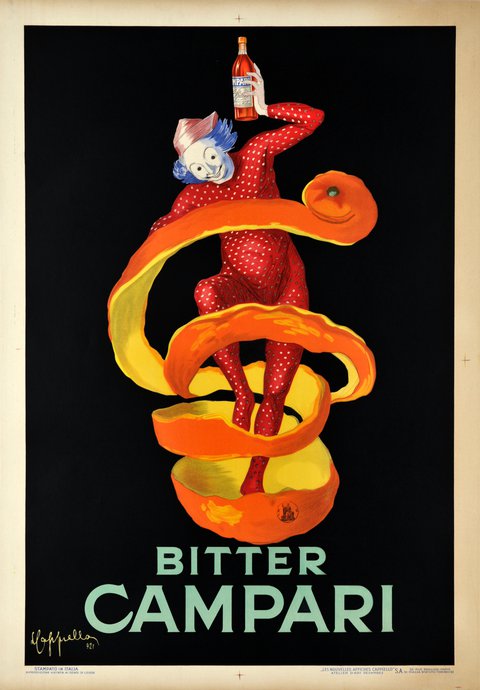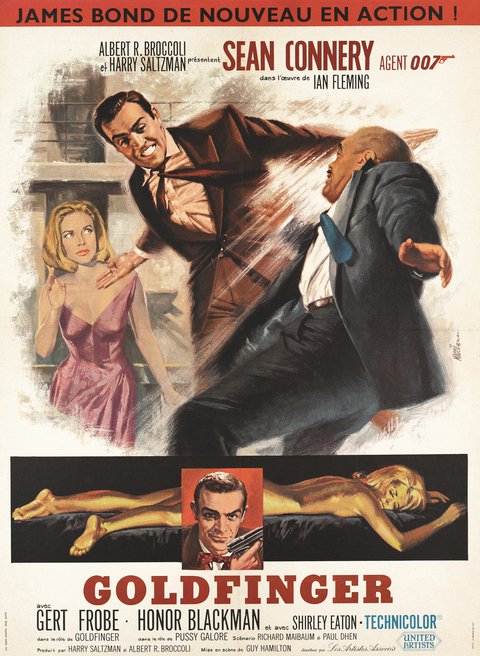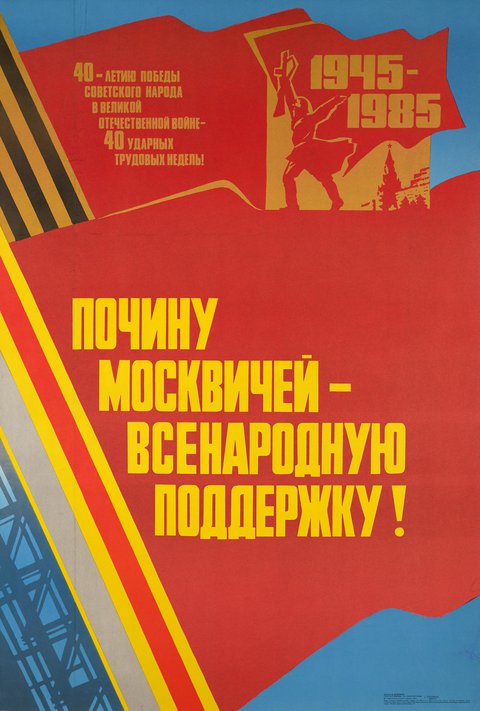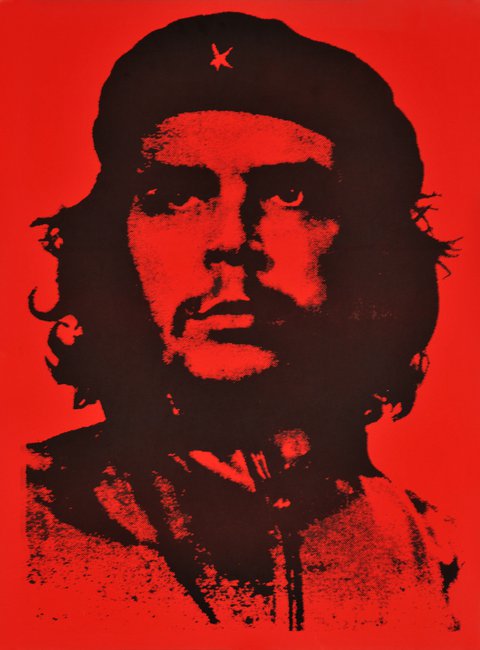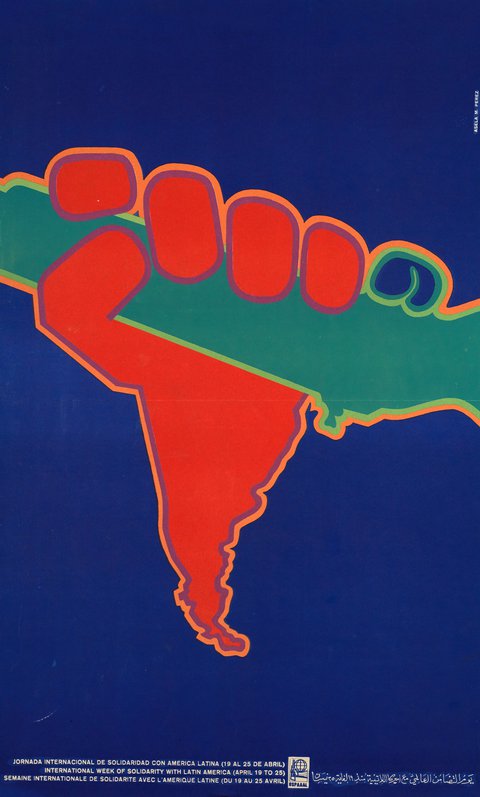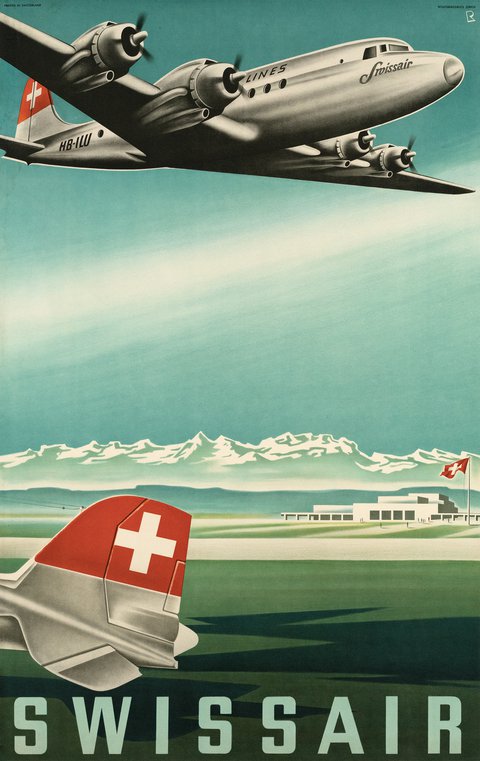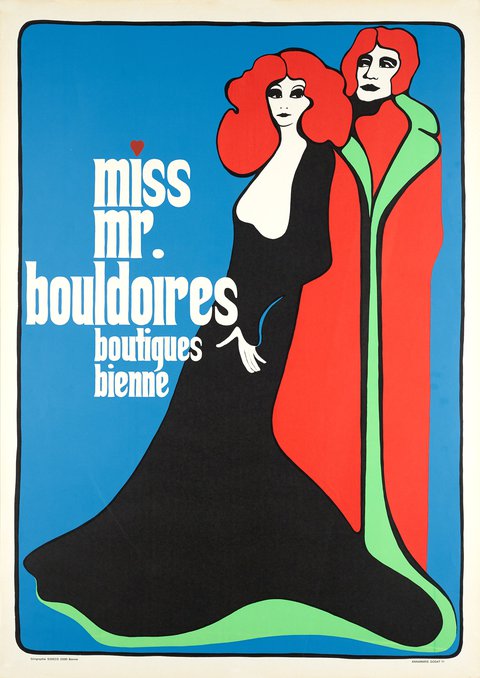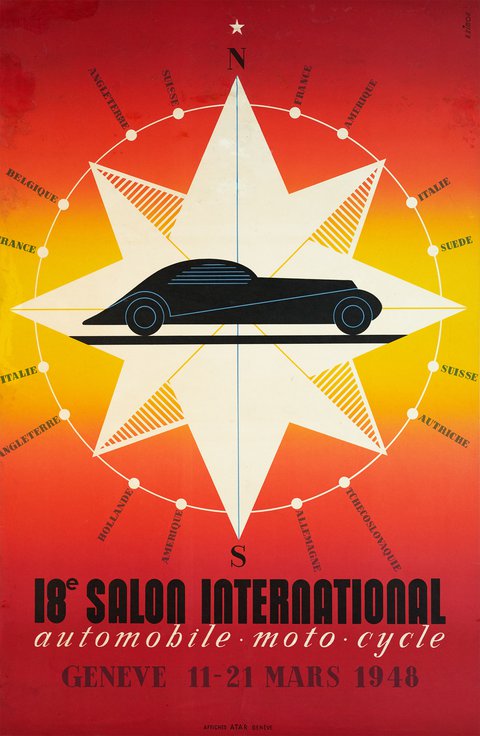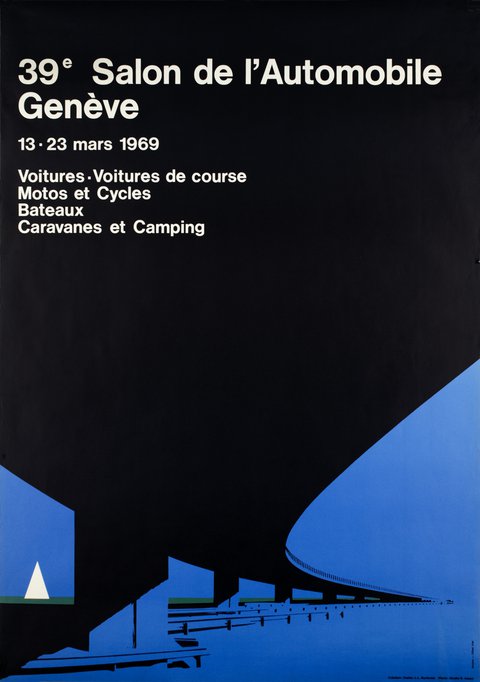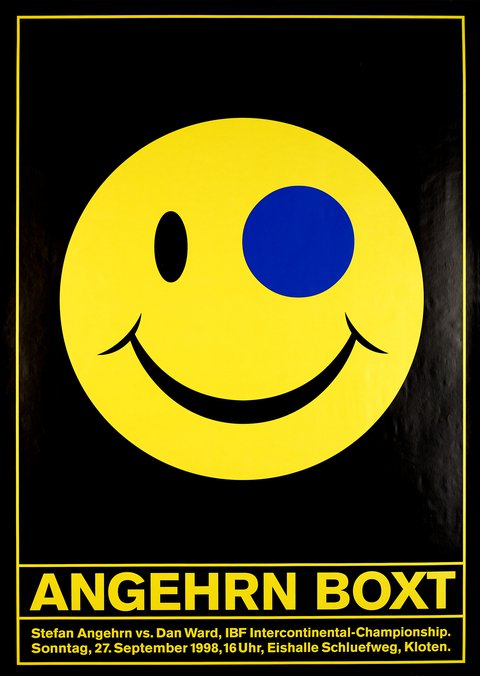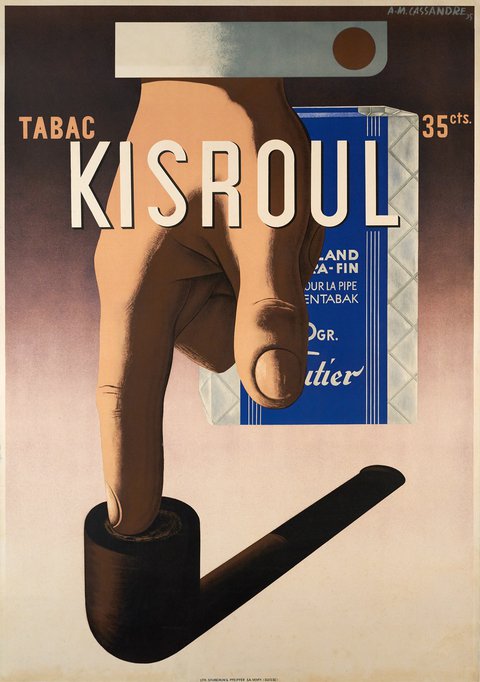ELECTRONICS, Energy, industrial products
AND TRANSPORT 1959-1960
STROMBERG-CARLSON, electronic intelligence 1960
Text in English.
Nickname: 'The radar or Wi-Fi'.

General Dynamics, electronic intelligence
1960 – Erik NITSCHE
CHF 2570.–
In 1955, General Dynamics acquired Stromberg-Carlson, a company with extensive experience in electronics and telecommunications.
On a map, Erik Nitsche superimposed concentric circles representing radio transmissions or radar signals.
In a flash of inspiration, he drew the Wi-Fi logo 40 years ahead of its time.
Once again, Erik Nitsche was at the forefront of graphic and technological design.
MATERIAL SERVICE, energetic earth 1960
Text in English.

General Dynamics, energetic earth, material service
1960 – Erik NITSCHE
CHF 2960.–
It is in the depths that we will find the energy to light and heat our homes.
Material Service, a coal mining company, is acquired by General Dynamics in 1959.
On this poster, an arrow sinking into the earth changes colour from blue, a cold colour, to yellow and then to red, the warmest colour. In the background, silhouettes of houses in the night, with their lit windows, are symbols of warmth and life.
MATERIAL SERVICE, building materials 1960
Text in English.

General Dynamics, Material Service, Building materials
1960 – Erik NITSCHE
CHF 5860.–
Inspired by the work of Piet Mondrian, Erik Nitsche suggests scaffolding and construction equipment in this magnificent poster.
LIQUID CARBONIC, medical gases 1960
Text in English.
Nickname: 'The spiral'.

General Dynamics, liquid carbonic, medical gases
1960 – Erik NITSCHE
CHF 2430.–
A spiral that transitions from purple (a moderately cool colour) to blue (very cool) to the black of absolute zero, symbolising the techniques of cold and liquid nitrogen in medicine.
This time, Erik Nitsche draws his inspiration from kinetic art, which was in full swing in the late 1950s.
With this spiral, which, when viewed from the front, begins to spin and draws us into an endless fall, Nitsche heralds the optical and hallucinatory art that officially emerged in 1962, two years after this poster was created.
Once again, Erik Nitsche is at the forefront of artistic creation.
LIQUID CARBONIC, industrial gases 1960
Text in English.
Nickname: 'The pipes'.

General Dynamics, industrial gases, Liquid carbonic
1960 – Erik NITSCHE
CHF 2190.–
A highly technical drawing of a tangle of pipes inspired by the Liquid Carbonic division in Oakland.

General Dynamics, Usine de liquide carbonique à Oakland en Californie
None – ANONYMOUS
ELECTRIC BOAT, undersea frontiers 1960
Text in English.
Nickname: 'The propeller'.
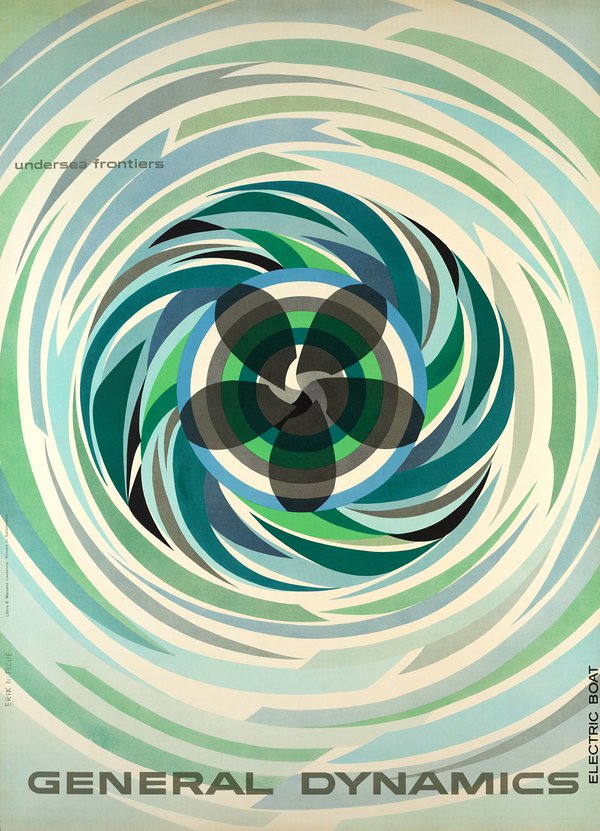
General Dynamics, Undersea frontiers - Electric boat
1960 – Erik NITSCHE
CHF 3270.–
NewGeneral Dynamics was founded in 1952 through the merger of Electric Boat and Canadair Ltd.
Electric Boat, founded in 1891, contributed naval and electric motor technology, which enabled the launch of the Nautilus submarine in 1955.
CONVAIR, convair 880: world's fastest jetliner 1959
Text in English.

General Dynamics, Convair 880: world's fastest jetliner
1959 – Erik NITSCHE
Price upon request
A modernist design pays tribute to this jewel of aeronautical engineering.
In 1959, the aeronautical division of General Dynamics, CONVAIR, produced the world's fastest airliner, the Convair 880, named after its very high speed of 880 feet per second (970 km/h).
To this day, its modified version, the 990, remains the fastest civil transport aircraft ever built, with the exception of the Concorde.
Today, for reasons of speed/fuel efficiency, aircraft fly slightly slower, at a cruising speed of between 800 and 900 km/h.
CANADAIR LIMITED, CL-44, canadair forty four air cargo 1960
Text in English.

General Dynamics, CL-44, Canadair forty-four air cargo
1960 – Erik NITSCHE
CHF 1175.–
On this poster for the CL-44 cargo plane built by Canadair, a division of General Dynamics, Erik Nitsche chose to draw a wooden crate in dark brown tones on the ground, which lightens and brightens as it rises, eventually becoming azure blue, the colour of the sky.
THE ADVENT OF GLOBALISATION
In 1960, Erik Nitsche designed two posters in a modernist style that heralded the future globalisation of air transport and technology.
These were the last General Dynamics posters in Swiss size printed by Roger Marsens.
CONVAIR, convair 880: world's fastet jetliner 1960
Text in English.
Nickname: 'The basketball hoop'.
Symbolised by coloured lines crossed by the Convair 880 built by General Dynamics, the nations carry the globe.
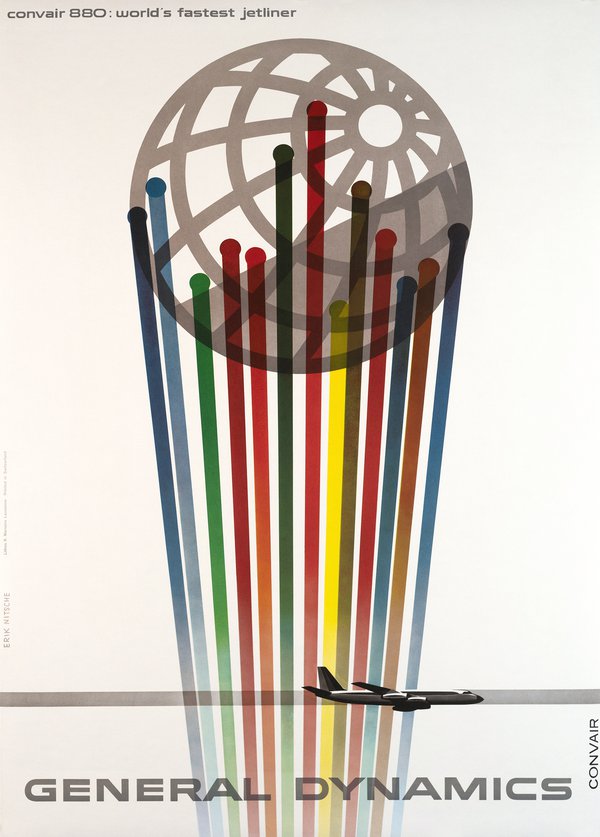
General Dynamics, Convair 880 world's fastet jetliner
1960 – Erik NITSCHE
CHF 1470.–
< Version with text in English
(rare)
Version before the letter
without text >

General Dynamics, Convair 880 the world's fastest jetliner
1960 – Erik NITSCHE
CHF 1070.–
CONVAIR, bientôt en service: convair 990, premier jet du monde à 1000 km/h - 1960
Extremely rare version with text in French (only two copies known) announcing the introduction of the Convair 990.
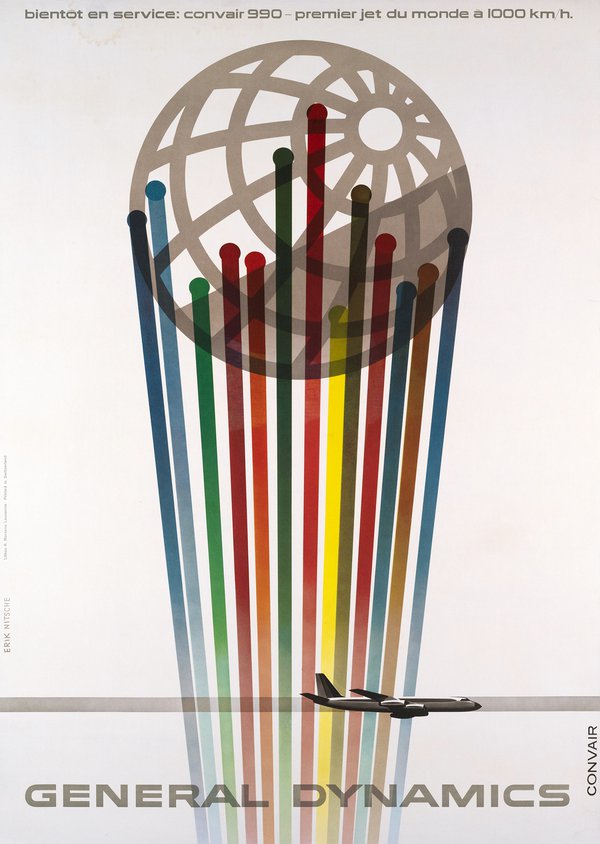
General Dynamics, bientôt en service: Convair 990 premier jet du monde à 1000 km/h
1960 – Erik NITSCHE
CHF 1650.–
Introduced in 1962, the Convair 990 Coronado had a maximum speed of Mach 0.91 (approximately 1,100 km/h), a world record for an airliner until the Concorde entered service. American Airlines was the first operator to use the Convair 990 Coronado.
Following numerous technical problems and high fuel consumption, this aircraft was a commercial failure that cost General Dynamics dearly. Only 37 units were produced between 1961 and 1963.
GENERAL ATOMIC, triga around the world 1960
Text in English.
Nickname: 'The globe'.
All nations united in the peaceful use of atomic energy. The grey dots symbolise nuclear power stations that bring energy and peace to the earth in holistic harmony.

General Dynamics, Tigra around the world, General Atomic
1960 – Erik NITSCHE
CHF 1320.–
< Rare version
with text in English:
"triga around the world"
Version before the letter
without text >
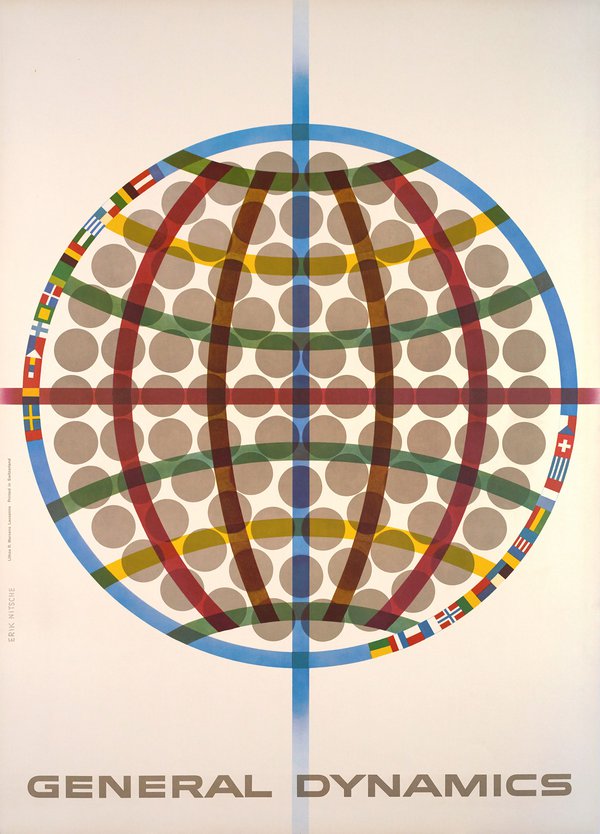
General Dynamics (Triga around the world, General Atomic)
1960 – Erik NITSCHE
CHF 920.–
> All General Dynamics posters available

